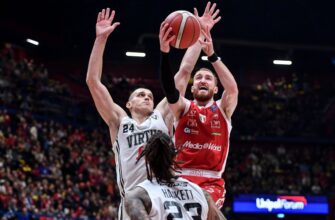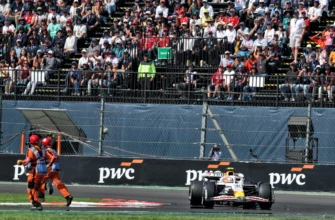The recent 2-1 defeat to Chelsea was more than just another lost match for Liverpool; it served as a stark, perhaps even devastating, reality check. What was once optimistically termed “Slottage Time” — a penchant for late-game heroics — now feels less like destiny and more like a high-stakes gamble with increasingly unfavorable odds. After three consecutive losses, the initial buoyancy of the season has evaporated, revealing deep-seated issues that are forcing Arne Slot, the new manager, to confront a version of Liverpool dramatically different from its recent title-winning iterations.
Just a mere eight days prior, the Reds had reasons for quiet confidence. They weren`t always performing at their collective peak, but they consistently found a way to win. The narrative was one of resilience, of a team that simply knew how to prevail. Now, however, the script has flipped. The tactical vulnerabilities that were once masked by sheer willpower and individual brilliance are glaringly exposed. As the season progresses towards the 20% mark, the questions surrounding Liverpool`s foundational strength grow louder. What exactly is troubling the giants of Anfield?
1. The Alexander-Arnold Conundrum: A Void Beyond Replacement
The hypothetical departure of a generational talent like Trent Alexander-Arnold to Real Madrid might have been anticipated to impact Liverpool`s offensive creativity. His ability to deliver defense-splitting passes and dictate play from the right flank is, to put it mildly, unparalleled. The team’s ball progression statistics remain respectable, with players like Ryan Gravenberch and Virgil van Dijk maintaining their output, but the sheer volume and inventive quality of Alexander-Arnold`s distribution are visibly absent. Florian Wirtz, when present, offered some solace in the final third, but the overall inventive spark has dimmed.
What was perhaps less foreseen was the dramatic regression in the defensive aspect of the right-back position. While Alexander-Arnold`s defensive acumen was often scrutinized, it had, charitably, shown signs of improvement. The current reality, however, sees the right flank as a persistent Achilles` heel. Conor Bradley`s challenging 45 minutes against Alejandro Garnacho and Dominik Szoboszlai`s subsequent redeployment — an attempt to replicate Alexander-Arnold`s attacking threat that ultimately exposed him defensively — only underscored the problem. Szoboszlai, despite contributing to the equalizer, found himself out of position, flat-footed, and overwhelmed by Chelsea`s targeted attacks. Marc Cucurella’s post-match comments, “We tried to attack always [that side] because we know Salah is always ready to play counter-attack. So we practiced, and the manager told us the spaces might be there,” are not merely an opponent`s boast; they are a tactical indictment. Liverpool`s historic ability to shield its defensive weaknesses seems to have waned, leaving Ibrahima Konate, once a robust cover, looking isolated.
2. Mohamed Salah`s Fading Imperial Reign
For years, Liverpool`s strategy on the right flank could be summarized thus: let the opposition`s left-back venture forward, for Mohamed Salah would be lurking, ready to punish the slightest misstep. Allowing Salah space was, for many teams, a death wish. But this season tells a different story. Since Liverpool`s Champions League exit, the “Egyptian King” has appeared less than his imperious best.
A statistical dip is undeniable: four goals (one a penalty) and three assists in sixteen Premier League games represent a significant downturn from his usual prolific output. His shots per 90 minutes have fallen from 3.7 to 2.2, a cratering of performance that raises an uncomfortable question: Has Salah delivered his last truly elite season? While glimpses of his former self—an audacious outside-of-the-boot cross, an instinctive run—still appear, they are now flashes rather than sustained brilliance. Manager Arne Slot`s assertion that Salah “had many opportunities to do what he’s done so often… It’s not like every chance he gets is always a goal, we feel like it is because of what he did last season, but he can have a game where he has chances in promising positions,” sounds more like hopeful rationalization than a definitive answer. Indeed, even at his peak, Salah didn`t score *every* chance, but it certainly felt that way. And that feeling of inevitable impact was precisely what propelled Liverpool. Without their best player firing on all cylinders, the team inevitably becomes a shadow of its former self.
3. The Erosion of the Front-Foot Press
Curiously, statistics suggest Liverpool is allowing fewer passes per defensive action (PPDA) this season, implying a more intense press. However, this seemingly positive metric is deceptive. It might simply reflect the team`s inability to establish early leads, forcing them to chase the ball and press for longer periods. The critical issue is not the *quantity* of pressing, but its *quality* and *effectiveness*.
Liverpool`s attacking third recoveries are down by approximately 10%. This decline is hardly surprising given the changes in personnel. The diligent pressing of players like Luis Diaz and Darwin Nunez, coupled with the tragic loss of Diogo Jota, represented a significant portion of the team`s defensive work from the front. These players tirelessly covered for the more attack-focused Salah, saving his energy for crucial moments. Alexander Isak, while a promising talent, seems intent on a similar approach, creating a visible vulnerability. Opponents, such as Benoit Badiashile of Chelsea, found it remarkably easy to bypass Liverpool`s initial lines and connect with Joao Pedro. Once past this porous first barrier, Liverpool`s midfield often appeared disoriented. A quick sideways flick from Malo Gusto, and Moises Caicedo found himself with acres of space. Even if Alexis Mac Allister is not at full fitness, the collective scramble to occupy such critical spaces appears to be missing. From front to back, particularly in the first half against Chelsea, there was a noticeable absence of the trademark Liverpool intensity. It begs the question: was this really a team coached by Jurgen Klopp a mere eighteen months ago?
Against a Chelsea side missing six central defensive options – with Reece James pressed into service alongside Jorrel Hato, and starters Badiashile and Josh Acheampong withdrawn to manage their fitness – Liverpool`s inability to exploit their hosts` vulnerabilities was particularly telling. Chelsea was ripe for disruption, ready to be “discombobulated by a bit of oomph” when on the ball. Yet, Liverpool never truly threatened to deliver that decisive punch. For all the tactical dilemmas outlined, this fundamental lack of aggression and intensity, the very soul of Klopp`s reign, might be Arne Slot`s most profound and worrying challenge.







